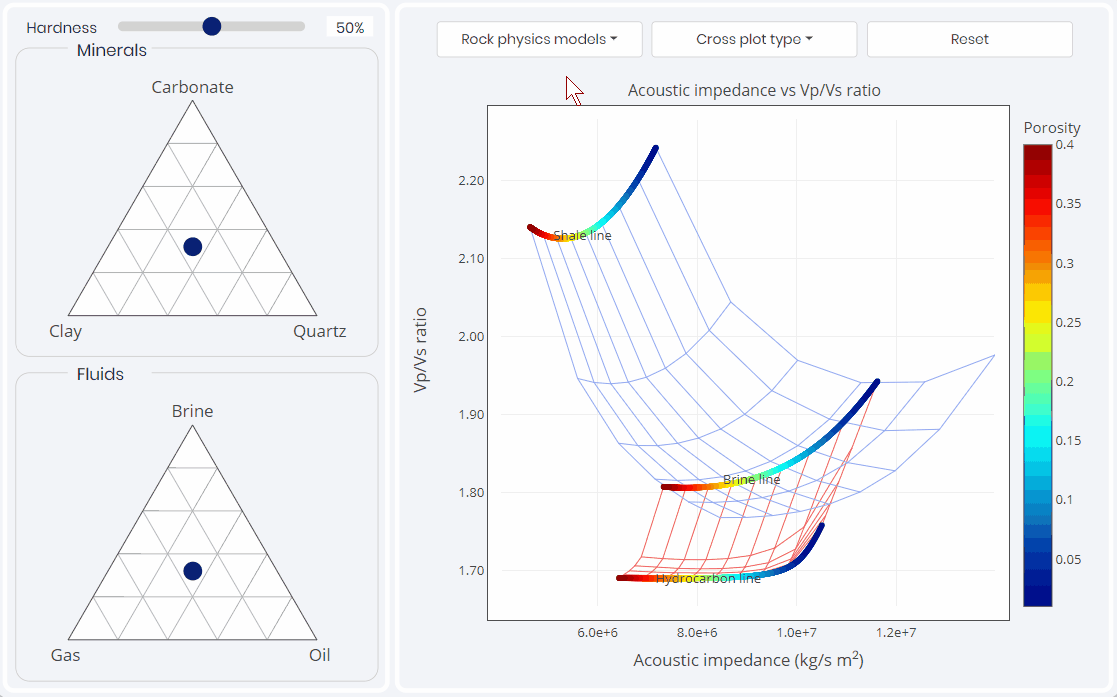The physical properties of rocks – their density and elastic moduli – along with their porosity and the fluids filling them can be accurately measured by various methods, both in situ as in well-logs and from laboratory tests of well cores. But to predict those properties from just a knowledge of mineral and fluid composition and porosity is a complex process. This is due mainly to the fact that rocks of the exact same composition can have different properties depending on how those constituents are put together.
Geoscientists and petrophysicists use different rock models to simplify and facilitate the prediction of rock properties.
The most general models can predict the upper and lower bounds of the physical rock properties. That is, the actual rock properties must exist only between those two bounds. There are two well-known rock property models of this type:
- Voight-Reuss
- Hashin-Shtrikman
Voight-Reuss Model
This model sees a rock as hard and rigid plates separated by softer materials. If you measure properties along the plates, this is the Voight upper –harder– bound in which the forces are supported by the rigid framework. If you measure the properties at right angles to the plates, this is the Reuss –lower– bound in which the forces are supported by the soft materials.
Hashin-Shtrikman Model
The Hashin-Shtrikman upper and lower bounds are a trifle more sophisticated. Instead of layer cakes, one can think of balls encased in other balls, each having different properties. A hard ball inside a soft one will be easier to squeeze than a hard ball with a soft center. Then imagine many of these balls put together into a larger system.
Depending on what model is used to calculate the upper and lower bounds of a particular system of minerals and fluids, the rock physics templates (curves) are differentiated. Below 👇 is the “Rock Physics Modeling” simulation in the metaKinetic platform, computing and illustrating the changes of a chosen rock physics template with variation of the rock properties.

This simulation is designed to convey the concept of how rock properties change with rock type and how complex it can be to design a rock to exact specifications.
Michael Burianyk, Scientific Advisor
Want to have access to this simulation and build your own rock type and rock physics templates? Contact us!
